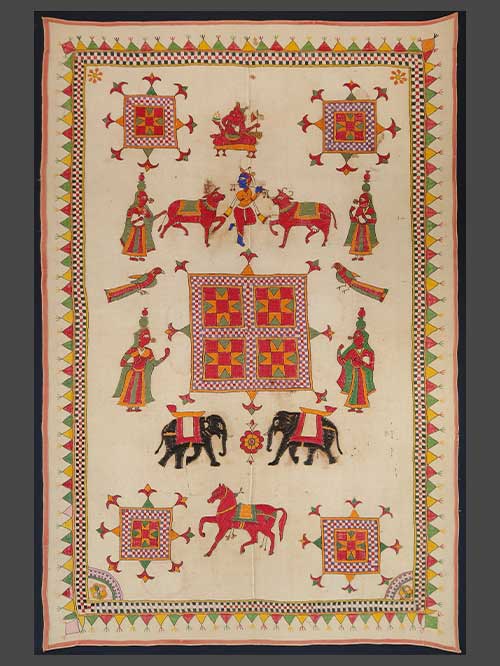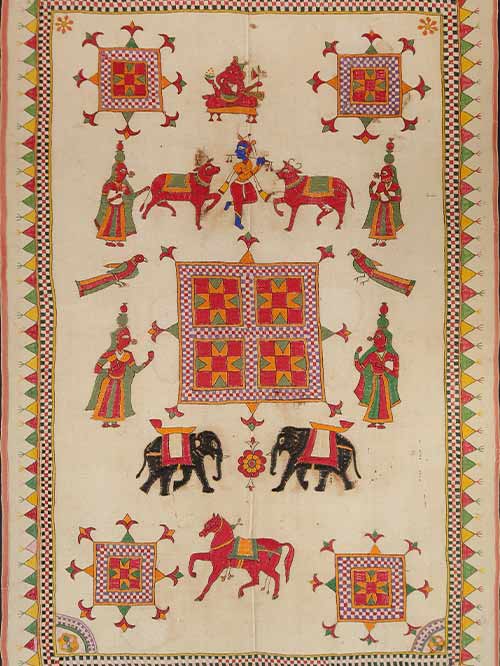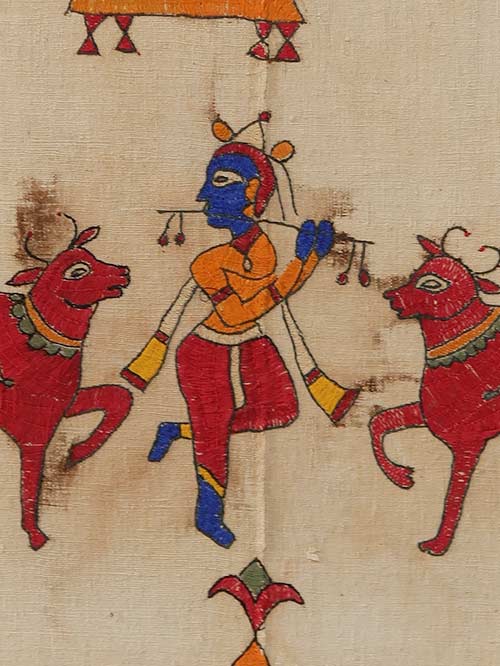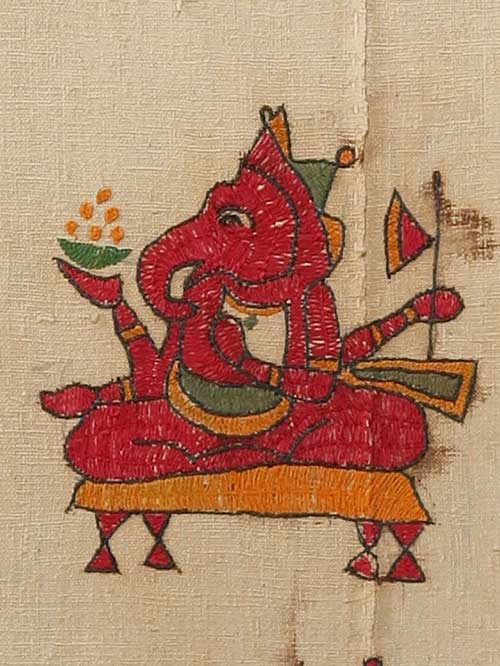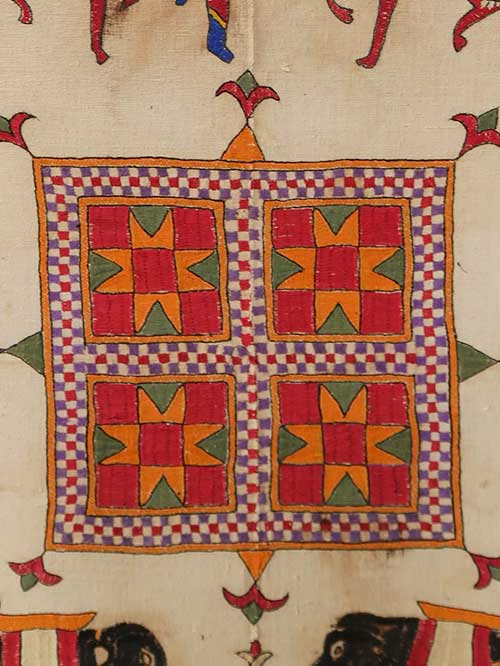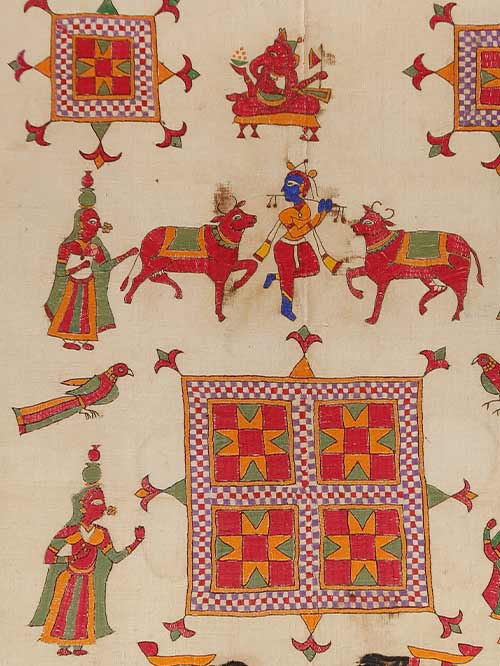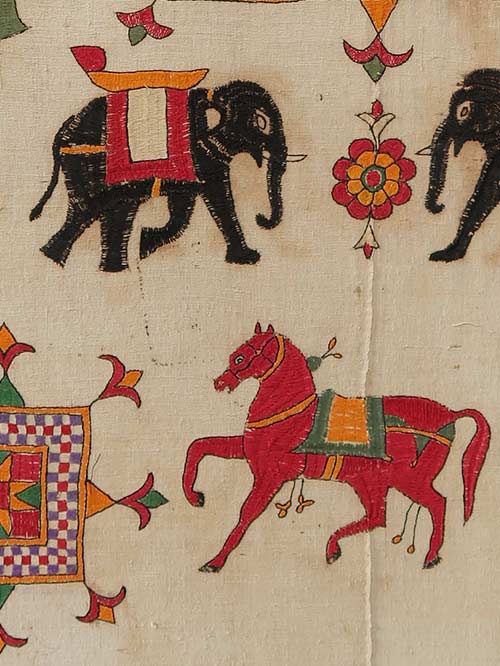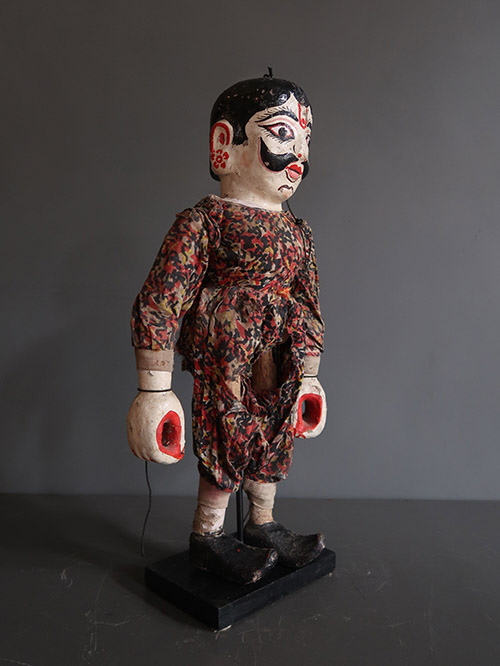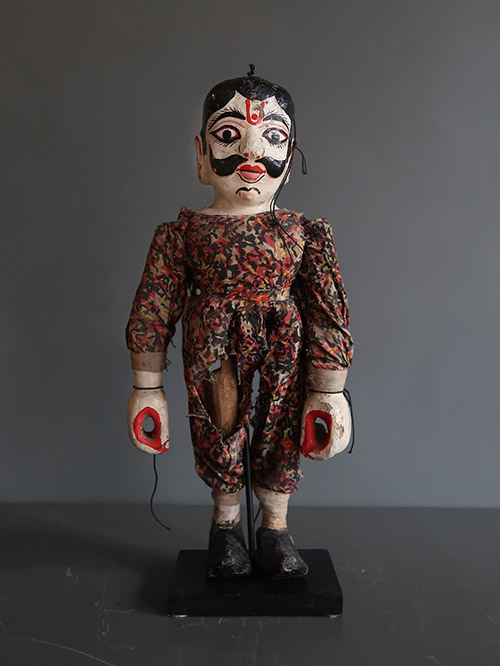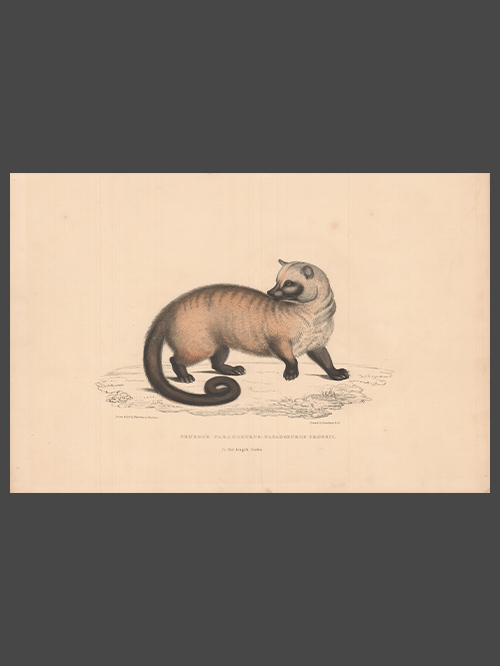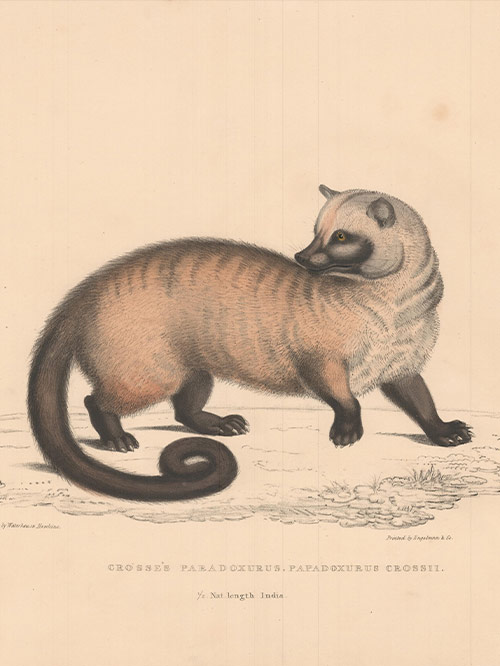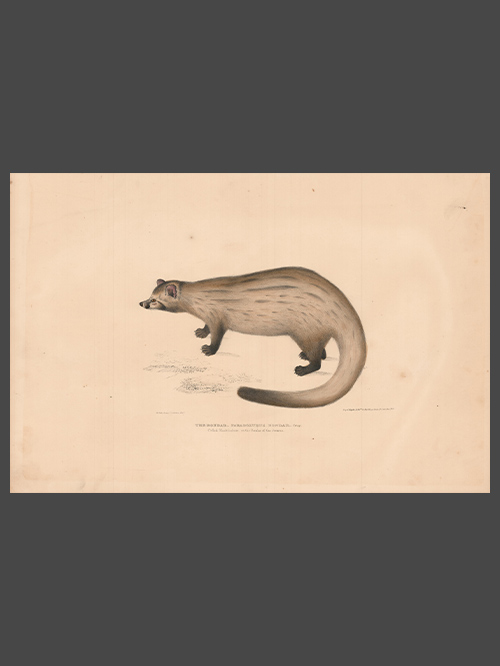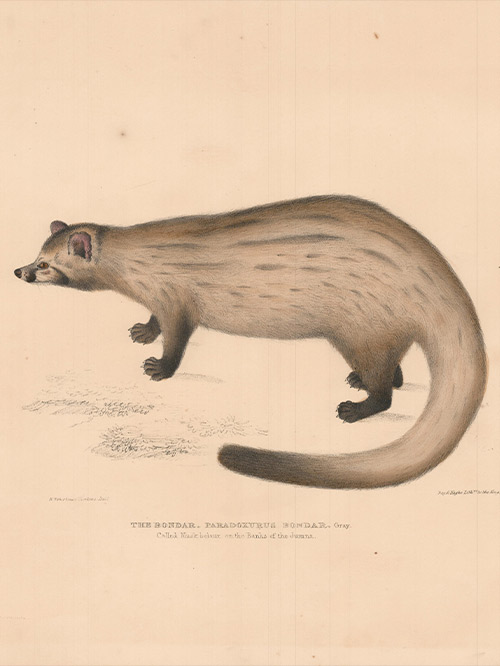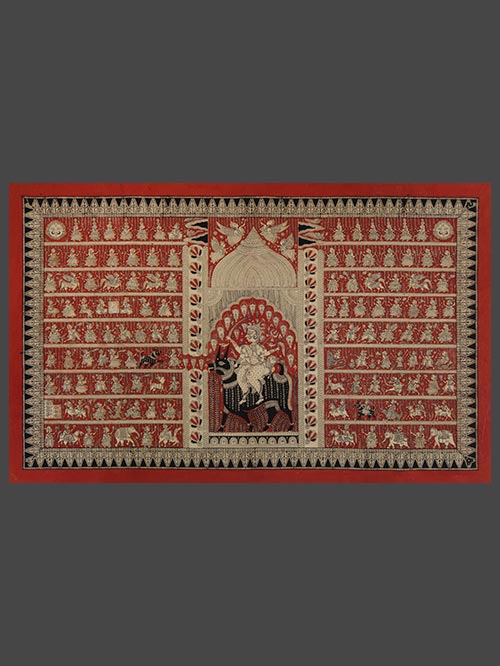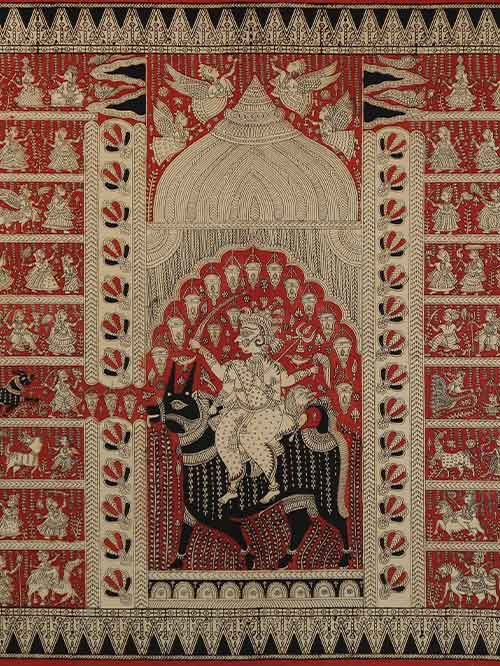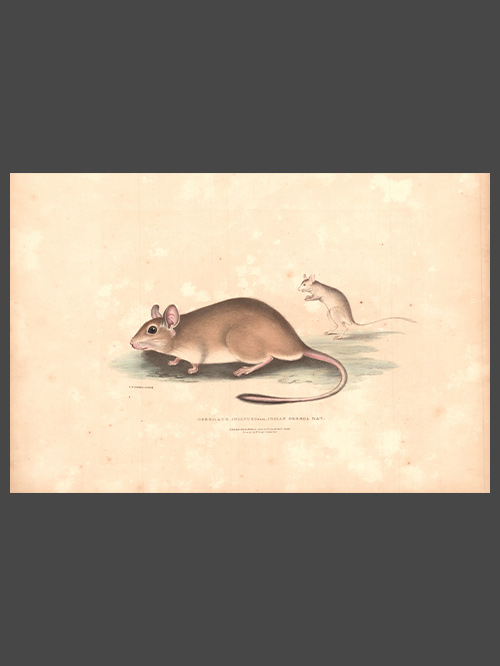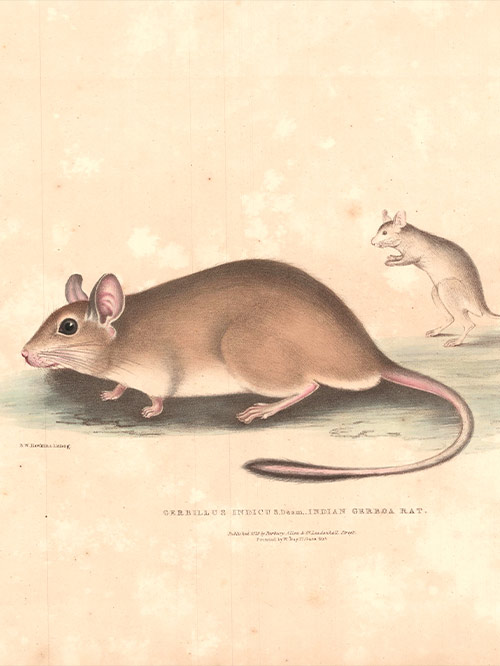Saurashtra, Gujarat
Cotton with embroidery
An attractive Dharaniya cloth embroidered with deities, figures and animals and symbols. Krishna as Venugopal stands fluting between a pair of cows and a pairs of milkmaids (gopis). Ganesha, a symbol of good luck appears at the top centre while in the four corners and centre are decorative chaukis. The chauki at the centre is surrounded by the second pair of milkmaids carrying milk pots on their heads, pairs of elephants, and parrots and a horse. The border is geometric chequerboard pattern with colourful triangles resembling the traditional toran.
Kutch, Saurashtra, and Western Rajasthan are dry areas with limited cultivatable land that mainly provide seasonal grazing for animals such as sheep, cattle, and camels. The inhabitants are primarily small farmers or pastoralists, with merchant and artisan communities in towns. The people are divided by caste, which is associated with a hereditary occupation, reflecting cultural diversity resulting from historical migrations through Iran and Central Asia. This cultural diversity has influenced the domestic embroidery tradition in western India. The region has a shared dowry tradition where a bride brings a large number of elaborately embroidered textiles, including costumes for the bride and groom, hangings for their new home, and trappings for domestic animals, as gifts to her husband’s home.
Size (cms): 211(H) x 140(W)
Size (inches): 83(H) x 55(W)

